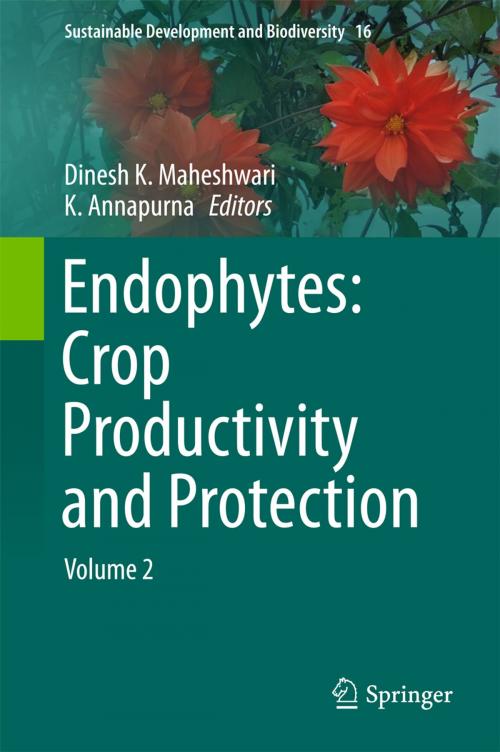Endophytes: Crop Productivity and Protection
Volume 2
Nonfiction, Science & Nature, Science, Biological Sciences, Biochemistry, Microbiology| Author: | ISBN: | 9783319665443 | |
| Publisher: | Springer International Publishing | Publication: | November 14, 2017 |
| Imprint: | Springer | Language: | English |
| Author: | |
| ISBN: | 9783319665443 |
| Publisher: | Springer International Publishing |
| Publication: | November 14, 2017 |
| Imprint: | Springer |
| Language: | English |
This book reviews the latest developments in our understanding of microbial endophytes and their potential applications in enhancing productivity and disease protection. It covers all the latest discoveries regarding endophytes, their interactions with plants and application in agricultural productivity and protection.
Our understanding of endophytes has increased exponentially in recent decades. These microbes, such as fungi, bacteria, and actinobacteria, establish a symbiotic or parasitic association with plants. A better understanding of endophytic microorganisms may help to elucidate their functions and potential role in developing sustainable systems of crop production and improved protection against biotic stresses. Endophytes play a vital role in plant growth and health promotion. Endophytic bacteria are of agrobiological interest because they create host-endophyte relationships, which can open exciting prospects for newer biotechnological applications. Endophytes have also proven to be a beneficial and sustainable alternative to agrochemicals due to their role in the biocontrol of pests and diseases. Further, endophytes are essential to the production of several secondary metabolites in grasses, in the process of gummosis in trees, and the production of useful metabolites such as alkaloids, pestaloside, cryptocandin, enfumafungin, subglutinols, etc. for the host plant. They are also involved in the production of enzymes, biosurfactants, biocontrol agents and plant growth promoters. As such, it is imperative that we explore these products’ industrial applications in the fields of biotechnology, pharmacy and agriculture.
This volume will offers a valuable guidance for botanists, microbiologists, biotechnologists, molecular biologists, environmentalists, policymakers, conservationists, and those working for the protection of plant species of agricultural and medicinal importance.
This book reviews the latest developments in our understanding of microbial endophytes and their potential applications in enhancing productivity and disease protection. It covers all the latest discoveries regarding endophytes, their interactions with plants and application in agricultural productivity and protection.
Our understanding of endophytes has increased exponentially in recent decades. These microbes, such as fungi, bacteria, and actinobacteria, establish a symbiotic or parasitic association with plants. A better understanding of endophytic microorganisms may help to elucidate their functions and potential role in developing sustainable systems of crop production and improved protection against biotic stresses. Endophytes play a vital role in plant growth and health promotion. Endophytic bacteria are of agrobiological interest because they create host-endophyte relationships, which can open exciting prospects for newer biotechnological applications. Endophytes have also proven to be a beneficial and sustainable alternative to agrochemicals due to their role in the biocontrol of pests and diseases. Further, endophytes are essential to the production of several secondary metabolites in grasses, in the process of gummosis in trees, and the production of useful metabolites such as alkaloids, pestaloside, cryptocandin, enfumafungin, subglutinols, etc. for the host plant. They are also involved in the production of enzymes, biosurfactants, biocontrol agents and plant growth promoters. As such, it is imperative that we explore these products’ industrial applications in the fields of biotechnology, pharmacy and agriculture.
This volume will offers a valuable guidance for botanists, microbiologists, biotechnologists, molecular biologists, environmentalists, policymakers, conservationists, and those working for the protection of plant species of agricultural and medicinal importance.















